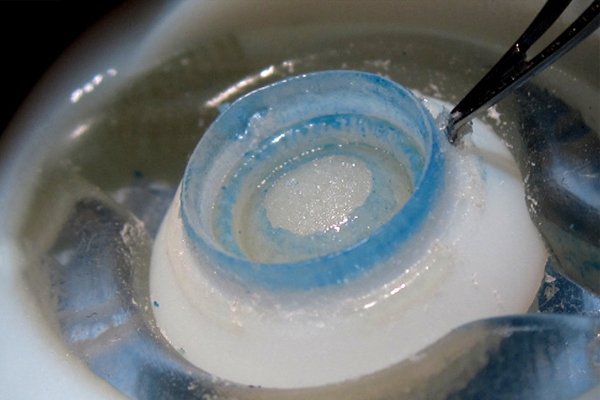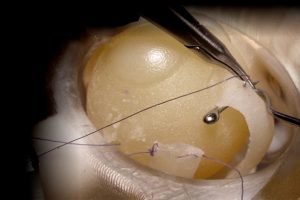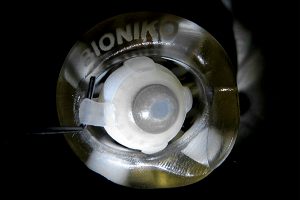CASES AND PATHOLOGIES
Evaluate the task by reviewing the following parameters:
- INCISION INTEGRITY: The integrity of the wound relates to good technique in manipulation of instruments through ports, a fundamental skill of ophthalmic surgery.Consistent rhexis size is an indicator of good technique and understanding of scale.
- RHEXIS CENTRATION: Although an offset is sometimes desired (nasal and superior) in real cases, for the purposes of task training and evaluation, a centered rhexis is convenient for scoring with simple instrumentation. A centered rhexis shows control of the surgical landscape.
- COMPLETION TIME: Although in real surgery situations quality is more important than speed, at a basic skill training level, time to completion is a good indicator of a learning curve. As familiarity with steps and confidence with the technique increases, a decrease in time to completion is expected.
Description
By presenting the main challenges of a capsulorhexis scenario, the RHEXIS task allows users to learn, train and perfect the fine motor skills required to properly use the wound as a fulcrum point for instrument movement; a fundamental skill in ophthalmic surgery.
Recommended Holder: MINI-HOLDER and ROMANO





